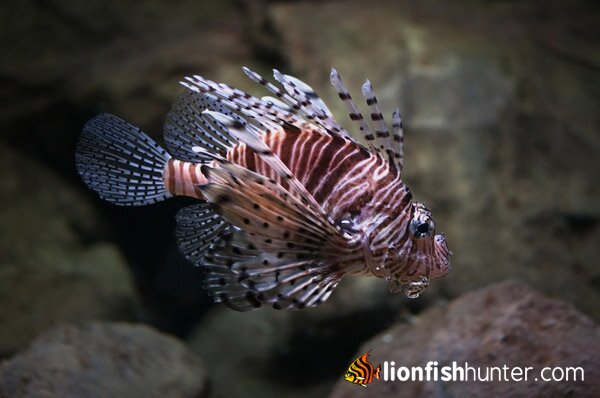
The Mombasa Lionfish is often confused with the Spotfin Lionfish or the Antennata, and is a prime member of the Lionfish family. They can be told a part from those two fish that they are mistaken for by a few key details. The shorter pectoral fin filaments are one of the dead giveaways, along with the larger eyes. They also have a very specific barring pattern on the base of the tail too. In addition, the Mombasa Lionfish is much like its cousin in the fact that they have a very dramatic and lovely display on their pectoral fins. It almost looks like they have wings.
The Mombasa Lionfish is frequently exported from Maldives, East Africa, and Sri Lanka. They come from the Indian Ocean. These particular fish like to dwell in the deeper water and can be found in a reef that is anywhere from 50 to 130 feet deep. The anal and dorsal fins along with the spines are extremely venomous. This means you have to be extra careful when you are cleaning the aquarium or anything like that. It can feel a little stronger than a bee sting, and if it happens you should put the affected area in hot water (100 to 110 degrees Fahrenheit) right away from at least 15 minutes.
Typically you want a dimly lit tank that is more than 50 gallons in size for this type of fish. You also want a lot of live rock for shelter and you want them to have a lot of places that they can use to hide. They are a nocturnal hunting species, and will most likely be perched somewhere while they are not hunting. If you have other fish in the tank that are small or you have shrimp/crustacean, they can be eaten and most likely will by the Mombasa Lionfish.
The smaller shrimp, preferably saltwater shrimp, are an ideal choice to get them started while they are acclimating to their new surroundings as far as food goes. They can also be weaned on to certain food types once they have adjusted to their new living area. The main feeding choice of owners of this fish are of the meat variety. Shrimp, live fish, and crustacean are all choices that are commonly made.




No Comments